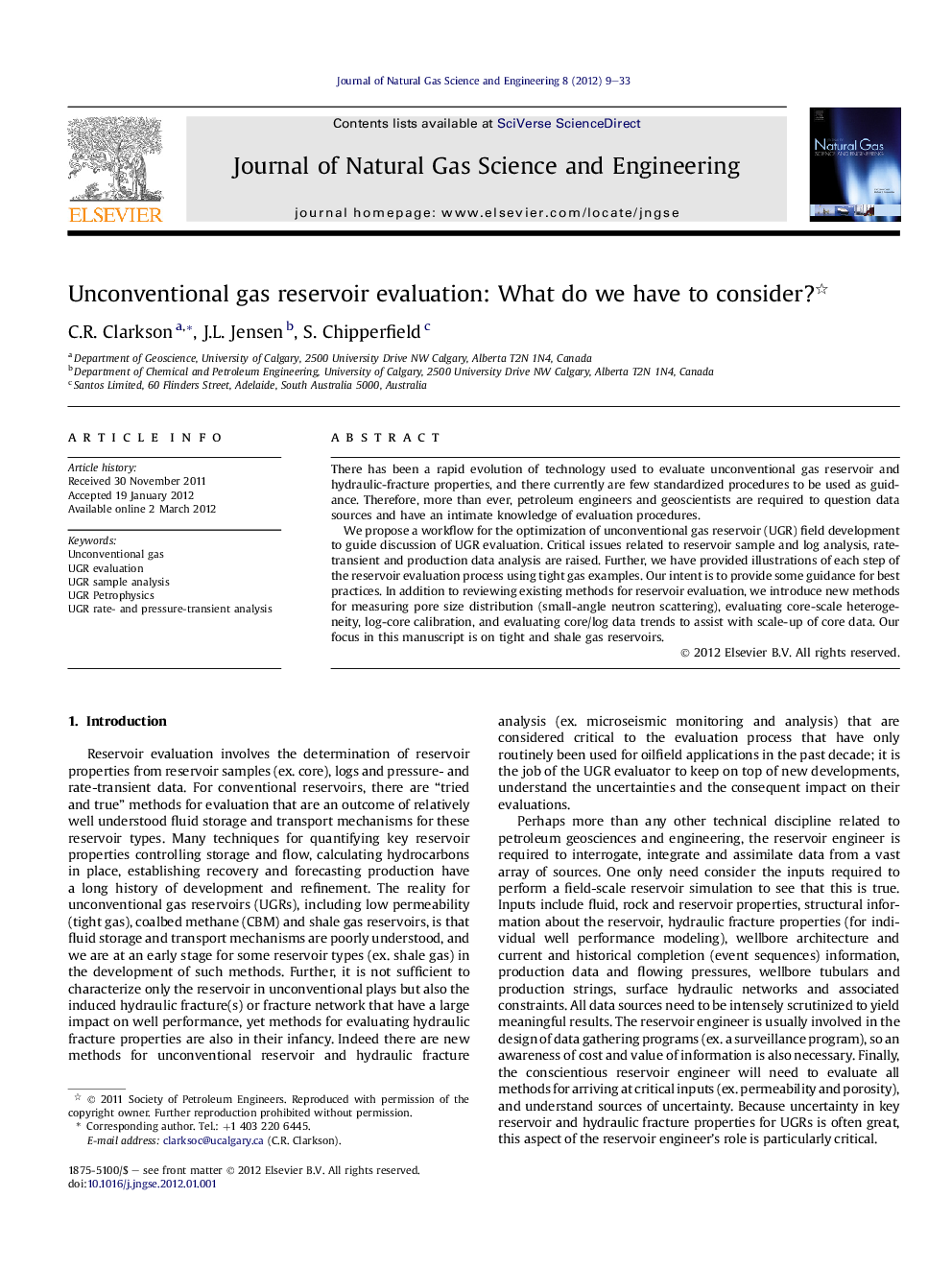| Article ID | Journal | Published Year | Pages | File Type |
|---|---|---|---|---|
| 1758223 | Journal of Natural Gas Science and Engineering | 2012 | 25 Pages |
There has been a rapid evolution of technology used to evaluate unconventional gas reservoir and hydraulic-fracture properties, and there currently are few standardized procedures to be used as guidance. Therefore, more than ever, petroleum engineers and geoscientists are required to question data sources and have an intimate knowledge of evaluation procedures.We propose a workflow for the optimization of unconventional gas reservoir (UGR) field development to guide discussion of UGR evaluation. Critical issues related to reservoir sample and log analysis, rate-transient and production data analysis are raised. Further, we have provided illustrations of each step of the reservoir evaluation process using tight gas examples. Our intent is to provide some guidance for best practices. In addition to reviewing existing methods for reservoir evaluation, we introduce new methods for measuring pore size distribution (small-angle neutron scattering), evaluating core-scale heterogeneity, log-core calibration, and evaluating core/log data trends to assist with scale-up of core data. Our focus in this manuscript is on tight and shale gas reservoirs.
